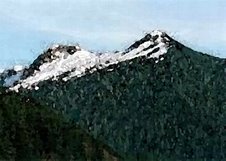Thursday, May 31, 2007
Plot-it-yourself
So imagine my delight at finding Pretty Little Mistakes, by NPR regular Heather McElhatton. Just like the kids' books, you are asked to make a choice at the end of each little chapter. The choices are a little different, however, as I find myself becoming the discarded mistress of a sixty-something Italian. Whoops, lets redo that. Now I'm getting shot in the parking lot of an Arby's . Bummer. Try again. Well, actually, none of the endings are really cheery. But I guess that's part of being an adult too. Regardless of the dearth of happy endings, it is so much fun to travel through your imaginary life making irresponsible, outrageous, dangerous choices that I enjoyed every story I conjured up in this book. It seems so easy to live a life when there are no real consequences.
Wednesday, May 30, 2007
Conscientious dining
Tuesday, May 29, 2007
Subterranean secrets
It's always fascinating to find out how things work, or are built, or operate. Even when you don't really want to know (think sausages and legislation - thank you, Otto von Bismarck). So believe me when I tell you that Beneath the Metropolis: the secret lives of cities is an absolute page-turner. So, what is below the streets of some of the most famous cities in the world? Well, water and sewer lines, obviously - even we have those - and often some sort of public transportation. (It's amazing to think of the work involved in retrofitting a centuries-old major metropolis with a subway, but that's another story). But what else is below the surface?
- Catacombs
- Torture chambers
- Libraries
- Abandoned ships
- Shopping malls
- Ancient ruins
- And lots of polluted aquifers
Surprisingly, New York - always good for an impressive story - is actually a very boring city underground. No rubble from earthquakes or firebombings, no abandoned civil defense tunnels, no secret cult chambers. What a disappointment. One of the most interesting tidbits of information in this book is that the refuse of Cairo has been building up for so many centuries that the doorways in the oldest sections of town are a few feet below street level.
